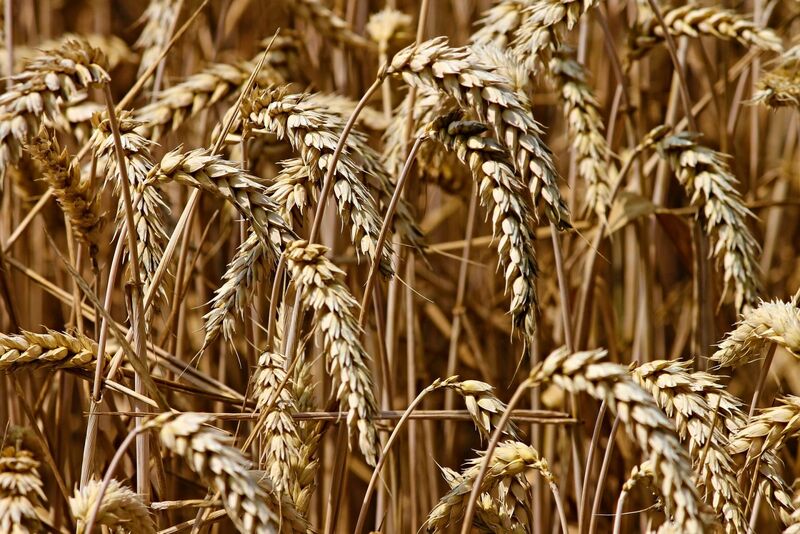
- The Barchart National HRW Wheat Price Index posted a bullish reversal pattern on its long-term monthly chart at the end of March.
- Fundamentally, Kansas City (HRW) wheat remains bullish, as indicated by its inverted 2023-2024 futures spreads.
- Recently, noncommercial traders have been quietly buying the market, as indicated by weekly CFTC Commitments of Traders reports.
Why do I like the Kansas City (HRW) wheat market? Maybe it’s because I like being poor (sad trombone sound). For those of you new to the world of wheat, this was a play on the old saying, “Buy wheat, live in the poor house”. Maybe it’s because natural gas, the famed Widow Maker, is not volatile enough for me (drum rimshot). But seriously folks, I like the HRW wheat market both fundamentally and technically as both are bullish at this time, meaning the market might only lose half its value over the coming months. Okay, that was the last wheat joke, for now.

Let’s start with the technical side of HRW wheat. At the end of March the Barchart National HRW Wheat Price Index (KEPAUS.CM), what I consider the intrinsic value of the market, completed a bullish spike reversal on its monthly chart. Additionally, this coincided with a bullish crossover by monthly stochastics meaning the HWPI both signaled (stochastics) and confirmed (bullish reversal pattern) a new long-term 5-wave uptrend. This also ended the previous 3-wave downtrend that has been in place since May 2022. The HWPI posted a low of $7.3522 during March before closing at $8.3566. The next key price is the 4-month high of $8.8415, with the long-term upside target range between $10.2834 and $10.9751, the 50% and 61.8% retracement levels of the previous downtrend.

Why am I targeting the higher end of the retracement range? Bullish long-term fundamentals. At the end of March the new-crop July-September Kansas City futures spread closed at an inverse of 3.75 cents while the July-December finished the month at an inverse of 3.0 cents. To make this more interesting, going back to the end of March 2022 we see the 2022 editions of these spreads closed at inverses of 4.5 cents and 9.0 cents respectively. This tells us the new-crop supply and demand situation is not expected to be as tight this time around the calendar, due in large part to an easing of demand.

Also at the end of March my HRW wheat available stocks-to-use calculation came in at 28.2%, while this had tightened from the end of February’s 30.6%, it was not as tight as the March 2022 figure of 24.1%. Recall this analysis is based on national average cash prices, again the intrinsic value of the various markets, and is in no way, shape, or form a guess on what USDA will say. When it comes to USDA’s guesses and me, well, remember Rhett Butler’s last words to Scarlett O’Hara.

It seems I may not be alone in my thoughts on HRW wheat as a buy, based on recent CFTC Commitments of Traders report (legacy, futures only, the CoT report that matters). Noncommercial traders had established a net-short futures position in Kansas City (red line on chart) of 12,155 contracts the week of Tuesday, January 10. Since then, there has been an ebb and flow of money in Kansas City wheat with the most recent ebb taking the noncommercial net-short futures position to 10,881 contracts. However, last Friday’s report (for the week ending Tuesday, April 4) showed this same group moving to a small net-long of 3,054 contracts. Like any other chart, we can apply technical analysis to this weekly “close-only” study. Here we see what looks to be a double-bottom with an interim high of 11,864 contracts (week of Tuesday, February 21). If the net-long futures position takes out the interim high, then basic pattern analysis would project the net-long to grow to roughly 23,100 contracts, or 20,000 contracts more than last week’s reported position.
What could keep the Kansas City market from rallying? There are a few things, actually. One, it’s wheat, meaning there is always a chance spring rains could help what looks to be a dead crop produce something. Second, new-crop Chicago (SRW) futures spreads are bearish given much of the US Midwest has seen beneficial weather patterns and the Black Sea region remains an wildcard for demand. Third, did I mention we are talking about wheat, the cockroach of the grain world? All that being said, wheat looks bullish to me at this time. We’ll see how of if things change by the end of the month.
On the date of publication, Darin Newsom did not have (either directly or indirectly) positions in any of the securities mentioned in this article. All information and data in this article is solely for informational purposes. For more information please view the Barchart Disclosure Policy here.






